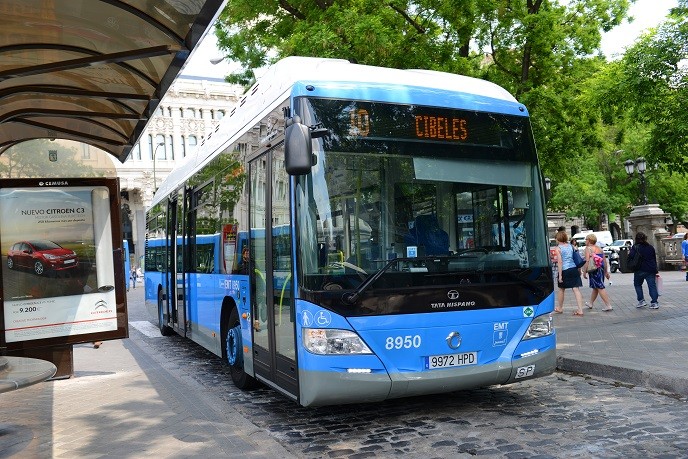Big Data enables better urban transport networks
The SIADE SaaS(opens in new window) (Spatial Decision Support System for Transportation Planning) project essentially marks a change in the positioning of Spanish SME Terrain Technologies. From a consultancy service built around an algorithm to infer passengers’ destinations, the company requested support from Horizon 2020 to become a software supplier. Now, cities across Europe can benefit from a solution enriching Big Data with a spatial component, enabling complex analysis of travellers’ behaviour to improve public transport networks. María J. Arguelles, project coordinator, tells us more about the company’s solutions and accomplishments so far. How can Big Data help provide a better public transport experience in Europe? María J. Arguelles: Smartcard ticketing systems currently available in many cities’ public transport systems enable a vast amount of data. These datasets reflect how people behave, which in turn means it is possible to assess their transport needs and provide an accurate picture of their habits, either as groups (based on fare types, such as student, elderly, etc.) or at an individual level. Thanks to Big Data analytics, we can adapt public transport to these needs, plan new services, minimise walking time, etc. What have been the shortcomings of attempts to use this data so far, and how does your software stand out in this regard? It is important to clarify that Big Data brings great complexity to transport because of something inherent to it: what is commonly defined as the ‘5 Vs’ (volume, velocity, veracity, variety and value). For example, a large amount of data volume implies large storage capacity. We can’t forget that cities like Madrid, for example, generate almost 500 million trips per year, and around 1.2 billion for the whole of the greater Madrid area which is almost as many as in Istanbul. The variety dimension involves datasets generated from different sources such as bus validators or mobile phones, while veracity highlights the importance of quality data and the level of trust. To complicate the picture even more, the fact that transport records are related to geographical locations means that we are dealing with data with a spatial component, or Spatial Big Data. To overcome those difficulties, SIADE SaaS has been designed as a core-GIS development, merging the spatial nature of data with advanced data analytics methodologies. How exactly do you make up for the absence of information on passengers’ destinations? That’s one of SIADE’s core algorithms. We can infer up to 88 % of passengers’ destinations with an accuracy of 96 %. These results confirm that we are very strong in building origin destination matrices based on transport data, and are much faster, less expensive and more complete than those generated by using a traditional methodology in public transport: interviews. It is important to note that our matrices are based on millions of records, while interviews are based on a small percentage of the whole population. What have you been able to achieve thanks to EU funding so far? What do you still need to achieve before the end of the project? The project was based on the understanding that we needed to change the business model and turn it into SaaS (Software as a Service). But this is a costly process, so without EU funding we wouldn’t have achieved that goal so fast. The project also involves several transport consultancy companies, transport operators and/or transport agencies across Europe, which have been paramount in testing SIADE versions. Besides that, we are lucky to be supported by a group of coaches provided by the EU that guide our decisions in the market strategy. We have already finished two of the three phases of the project, including the full analytics module and the simulator. The simulator can predict with an accuracy of 93 % the changes in passengers’ flow after altering or deleting any of the elements in a transport network, such as bus stop, lines, transfer policy, frequencies, etc. We are currently in the Big Data phase, solving all the problems related to the 5 Vs. Parts of the algorithms have been successfully refined to adapt to the new framework. Can you provide a few examples of challenges from specific clients that have been overcome thanks to your technology? Sure. For example, we have successfully shown that bus transport in Oradea (Romania) wasn’t covering the whole city centre efficiently. In Gijón (Spain), we found, thanks to the simulator, that changes in route 14 would increase the commercial speed, but at a price: people living in one of the neighbourhoods affected by the new route design would stop being bus customers, while most of them would use another route (18) instead of using transfers. In Modena (Italy), the data model has been improved and changed to exploit SIADE’s capabilities much better. Our suggestions to create a circle route in Gijón have also been implemented in the city’s new Mobility Plan. Can you tell us more about your market reach at this point? We are currently collaborating with several transport consultancy companies to explore together tender opportunities in Spain, Latin America and Eastern Europe. The fact that we have a successful project funded by the EU is an extraordinary competitive advantage. What are your follow-up plans, once the project is completed? We are succeeding in creating a platform that fits our customers’ and partners’ needs 100 %, so we expect to continue evolving in other markets outside of Europe and Latin America, such as the United States and Canada.
Countries
Spain



